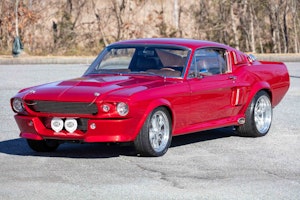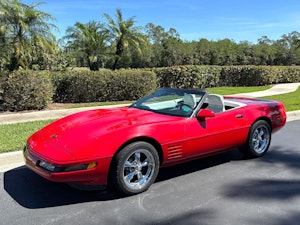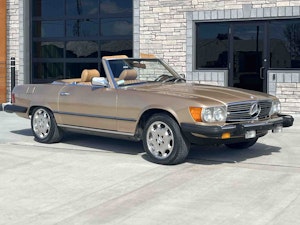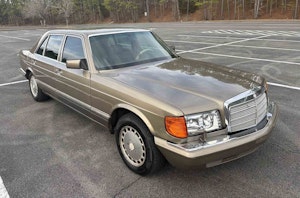Media | Articles
10 Pickups You May Have Forgotten About
Pickups have long been among America’s most popular vehicles, with the Big Three unsurprisingly winning the hearts and minds of those who’ve needed the ability to haul stuff around over the years. In among the Rams, F-150s, and Silverados, though, there are quite a few models, variations, and brands that have been forgotten along the way. Here’s a quick peek at some interesting bed-ridden vehicles you might not have thought about in a while, if ever.
1969-76 IHC Series D Pickup

For 1969, International Harvester Company redesigned their pickup truck for the first time in a decade. The new pickups took much of their design from the IHC Scout SUV, featuring more car-like interior appointments. They could be configured in a whole host of ways: two doors or four, wheelbases ranging from 115 to 164 inches, and both six- and eight-cylinder power on offer. But IHC’s smaller, more rural dealer network couldn’t match Detroit’s reach, which hit IHC hard when sales slumped during the OPEC Oil Embargo. IHC started losing money on its pickups, and would axe them altogether by 1976.
1971-87 GMC Sprint/Caballero

Essentially a Chevrolet El Camino with a different grille and emblems, the GMC Sprint was built atop GM’s rear-wheel-drive A-Body car platform, and employed the same pickup bodyshell. Power choices over the years ranged from a workaday 250-cubic inch inline six to the 454-cubic inch V-8 offered from ’70-75, with plenty of small-blocks in between. Three-speed and four-speed manual transmissions were offered, along with a Turbo Hydramatic automatic transmission. When General Motors downsized the A-Bodies in 1978, the Sprint was renamed the Caballero, a name formerly used on 1950s Buick station wagons. The El Camino and Caballero were dropped after 1987, when the A-Body platform switched to front-wheel drive.
1974-87 Jeep J-10 Honcho/Golden Eagle

Jeep’s full-size traditional pickup, the 1963 Gladiator, was a spin-off from the Wagoneer. The name would last through 1971, after which it was known as either the J-10 (119-inch wheelbase) or the J-20 (131-inch wheelbase). Either could be fitted with Honcho, Golden Eagle and 10-4 trim packages. The J-10 and J-20 shared their cab designs with the Wagoneer and Cherokee, with the Honcho sporting ’70s-era gold-striping, off-road tires, and a Levi’s denim-trimmed cab. The Golden Eagle was every bit its flashy equal, with a grille guard, driving lamps, pick-up bed roll bar, eight-inch wheels, an eagle decal on the hood and a Levi’s interior.
1979-84 Volkswagen Rabbit Pickup

With the Volkswagen Rabbit being built in New Stanton, Pennsylvania, the American executives in charge at Volkswagen of America thought it would be a swell idea to hack off the back half of their front-wheel-drive hatchback and add a small pickup bed. Under the hood lurked a 52-horsepower 1.6-liter diesel engine or an optional 78-horsepower 1.7-liter gas unit. No, it wasn’t quick as a Rabbit, but payload for the tiny pickup was 1,100 pounds. It only lasted through the end of the first generation in 1983. Then, Volkswagen shipped the tooling to South Africa where it was reborn as the VW Caddy, lasting through, believe it or not, 2007.
Marketplace
Buy and sell classics with confidence
1982-84 Dodge Rampage/Plymouth Scamp

Good artists copy and great artists steal, or so they say. These pickups were based on Chrysler’s L-Body platform that was largely developed by France’s SIMCA, with assists from Chrysler and Britain’s Rootes Group. They spawned the Dodge Omni and Plymouth Horizon, along with the Dodge Omni 024 and Plymouth TC3 coupes, which donated their front ends to the Dodge Rampage and Plymouth Scamp pickups. A 2.2-liter four-cylinder engine generated 84 horsepower and mated to a three- or four-speed manual transmission, or a three-speed slushbox. Payload was rated at 1,145 pounds. While the Dodge was produced all three years, the Plymouth was offered solely in 1983.
1989-91 Dodge Dakota Convertible

Larger than a Ford Ranger or Chevrolet S10, but smaller than an F-150 or Silverado, the Dakota wasn’t setting the world on fire. To stoke sales, Chrysler added a droptop version in 1989 as the Dakota Sport convertible. It was powered by a 125-horsepower 3.9-liter V-6 mated to a five-speed manual or four-speed automatic, and a four-cylinder was offered the following year. But the Dakota Convertible didn’t look all that great with the top down, and no one really knew what to make of a convertible pickup, so a mere 3,759 were built over three years. The convertible pickup idea would be revived, similarly unsuccessfully though certainly more artfully, as the 2003-06 Chevrolet SSR.
1992-2004 GMC Sonoma GT

While GMC had fielded the Syclone high-performance pickup truck in the 1990s, it also fielded the 1992 Sonoma GT, which is best described as all hat, no cattle. Yes, it sported the high-performance look of its fast turbocharged all-wheel-drive forebear, along with factory Bilstein shocks, B.F. Goodrich Comp T/A tires and a rear limited-slip differential. But things turned mundane under the hood, where resided GM’s 180-horsepower 4.3-liter V-6 mated to a four-speed automatic that sent power to the rear wheels. A second-generation debuted for the 1994 model year, powered by a 2.2-liter four-cylinder or the 4.3-liter unit. It lasted another decade before being dropped.
1996-99 Chevrolet S-10 Electric

Sold only to fleet customers, the Chevrolet S-10 Electric pickup had two doors and a 16.2-kWh lead-acid battery pack under its six-foot bed. Power came from a revised GM EV1 powertrain delivering 114 horsepower (85 kW) to the front wheels. Weighing 1,200 more than typical gas models, the S-10 Electric required an agonizing 13.5 seconds to reach 50 mph. Top speed was 70 mph. Range was EPA rated at 33 miles. A nickel-metal hydride battery was optional later on, increasing range to 59 miles and dropping the 0-50 run to 10.5 seconds. Payload was 951 pounds. A full recharge took eight hours with the lead-acid batteries, five hours with the nickel-metal hydrides. It cost $33,305, or $66,386 today.
1998-2001 Ford Ranger EV

Great artists copy, well, you know the saying by this point. Not to be outdone by the S-10 Electric, Ford unveiled a Ranger EV, also using lead-acid batteries and providing a Ford-estimated 50-mile driving range. With 90 horsepower, the Ranger delivered a 12.5-second 0-50 mph run, a 70-mph top speed and a payload capacity of 700 pounds. Range was rated at 50 miles, dropping to 35 if the mercury dipped below freezing. Recharging took about six hours. Ford switched to nickel-metal hydride batteries in 1999, increasing range to 85 miles, and raising payload to 1,250 pounds. Charging times remained unchanged. Offered only in 22 states, Ford built the Ranger EV through 2001.
2002 Lincoln Blackwood

Lincoln’s baffling luxury pickup truck came to market wearing a bed lined with carpet and LED lighting, and topped with a non-removable bed cover. It also lacked a traditional tailgate, opting instead for swing-out barn doors. Using bits from the Ford F-150 SuperCrew and the Lincoln Navigator, the Blackwood had a 300-horse 5.4-liter V-8 and a four-speed automatic transmission feeding the rear wheels—four-wheel drive was not offered. Better for hauling polo mallets than garden pallets, Lincoln pulled the plug after one year and 3,356 units. Lincoln started over with the more-conventional 2006-08 Lincoln Mark LT—and failed again.






















Heck, I will never forget the 1972 Sprint SP I had. I knew they were rare back in the 80’s but never knew how rare with the big block. I remember it every day and wish I still had it.
Saw an old Jeep J-10 on the road yesterday. Not a collector vehicle by any stretch. A very straightforward vehicle, darn near impossible to break. A truck, but nobody seems to like trucks anymore, they want a 4 door sedan with a small bed.
Those 4 door sedans they call pickups are certainly all the manufacturers are willing to build anymore. Toyota and Nissan claim to offer a more traditional version, but good luck ordering one from a dealer.
Agree. More car, less truck. Even less in some cases.
Well said!!!
While there are certainly more “forgotten” pickups than I can remember or know of the Corvair Rampside comes first to mind. I can’t recall ever seeing one.
There are several around my area. One has a 421 Pontiac back there in the bed and was a finalist in the Hot Wheels competition a few years ago! Saw a near little stock one just the other day at a Cars and Coffee event.
i had a ’64 while in high school in the 70s. someone in washington state now has it, told me it’s possibly the latest production surviving rampside. my brother bought a ’64 about 10 years ago. really cool but the cabover design definitely has its pros & cons
My dad had one. Can’t believe they didn’t mention ig in the article. An air-cooled mid engine pickup more than 60 years ago.
Love my Dakota sport convertible.
There are three of the ramp trucks in n.e. ohio close to Hyper and myself, One a rat rod style and two nice restorations
I have 3 Rampsides (2 running) and within DACC (Detroit Area Corvair Club) there are at least 5 more! Not to mention the other Corvair groups around the Country! Very popular at the conventions!
There is a 61 Rampside sitting in my garage right now. I’ve had it 17 years. It looks great from 10 feet away, and I use it as a pickup occasionally. My opinion is that it is the most useful vehicle ever! I’ve moved the entire contents of my garage and storage sheds all by myself, thanks to the ramp. There is nothing else on the market that even comes close.
Dub- A Rampside with a 421 Super Duty and maybe a 6-71 does sound Hot Wheels cool. Didn’t they have an Econoline pickup with surf boards in the back? In a more stock configuration at a Cars and Coffee event I’d be looking for one with a small table, chairs and the Cinzano umbrella in the bed. Order a couple of espressos and a prebrunch apertif.
A friend of mine here in New Jersey has a ’63 E-pup. He makes surfboards, so he’s mounted one on each side of the bed for advertising. Last I heard from him, he had swapped out the old six-banger for a 289 and was trying to find parts to change the gearing in the rear end.
Put a mustang rear in my 302 powered econoline after one week of use with the original rear. Street raced it at connecting and any other queens streets in the 70’s
Paul – it’s almost as if you were there – the table, chairs and umbrella is EXACTLY how he was displaying his Rampy!
The VW Bus drop side pickup deserves a mention. I still see an occasional one in my area with the smiling owner behind the wheel.
Re: the Dakota convertible…
Last night I saw an ad for Jeep boasting the Gladiator as “The only open air pickup in the industry”.
With all four doors and the roof panels off, they were right. And it looked kinda cool.
Cool until it rains.
A simple look at the weather for the day before heading out can solve that…*sigh
Gee, wouldn’t it be great if we had a handheld device which could tell us the forecast anytime…complete with full color weather RADAR?
Maybe they’ll come up with a big screen on the dash to give us the same information… even in a Jeep.
Oh, wait….
Jeep Scrambler came before the Gladiator.
Ni. The Scrambler was a stretched CJ-7….and was called a CJ-8. Clever huh?
The Gladiator was the pickup version of the ’63 -on Wagoneer.
Sajeev, if Ford is crazy enough to bring back the Dustbuster I mean Aerostar, let’s hope they revisit the heater core removal process. The surest way to ruin your day is to have to service one of those. Oh, wait. The same thing applies to the ’90’s F- series. Remove the entire dash from the vehicle? Seriously?? Look out, die grinder with cutoff wheel coming through…
Still have to remove the dash, at least on the 2014 F150. Just had my heater core, evaporator, and compressor replaced and they had to remove the dash.
I understand that to repair the HVAC on my 2009 Crown Victoria Police Interceptor requires dash removal. So much for the more “simple” manual HVAC, over the “automatic” climate control!
The Dustbuster moniker belonged to the 1st Gen Pontiac Transport.
In my group of car friends and co-workers, it applied to the Aerostar first. Later came the “copy-cat” GM plastic fantastic minivans – which did, at least, have very versatile (optional) seating.
The GM plastic Minivans…will be hugely collectable someday.
I haven’t seen one in a long time. All ended up in bad neighborhoods, driven to death by single moms.
The best looking minivans outside of the Renault Espace.
Removing the heater core on most any vehicle involves dashboard removal. You’d think that the geniuses in engineering would figure out how to do it more readily. Or better yet, redesign the heater cores to last!
Thank you !!!
@Tim, ain’t that the truth!
They are ALL like that now. Everything has become a nightmare to work on.
Dub – Good to hear but it is kind of a no brainer right? Like putting a Ron Jon Surf Shop decal in the window of a woodie. So maybe restore an old Honda 150 Dream to strap down in the bed? Give you something to tool around the lot with.
International actually discontinued the Light Line trucks in May of 1975. There was never a 1976 model of them, although Scout continued until October 1980.
SUPERDUTY.
You forgot the Toyota Land Cruiser BJ/FJ/HJ45 pickup
Back in the early 1970’s the GMC dealer in Peoria Illinois ( Verkler GMC ) had a brand new 1971 GMC Sprint SS sitting on display in their showroom. It was red with white stripes, 454 and four speed. It was never for sale and was owned by the owner of the dealer ship.
Most but not all of them, ARE forgettable!
Test my memory? Those are all very familiar to me.
How about I test yours:
1956 Powell
The Powell reminds me of a Crosley
Umm, I don;t think I have forgotten about most of these, just don’t see many of them anymore. Sort of like the Subaru Brat.
Meant to add; I had a 1970 Jeep J4000. Anytime I went to a parts store, they could never locate a J4000, many telling me “you must mean a J3000″….nope…J4000. I would sometime have to show them the emblem on the side of the fender. No one seemed to have J4000 in their books.
We own one of those 50 Neiman Marcus Blackwoods and can assure that they are rare. And comfortable. And good-looking. Though they were rear drive only, they can pull 8000+ lbs. Perfect for hauling our rare 1949 Lincoln EL Convertible Coupe! And carrying golf clubs in style.